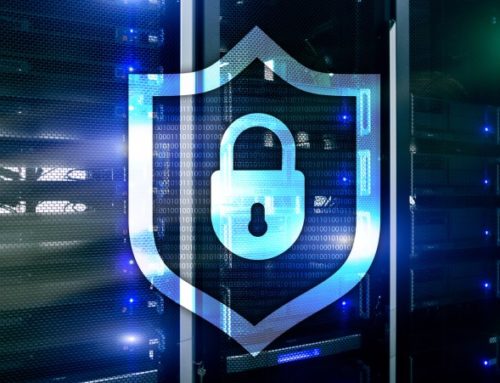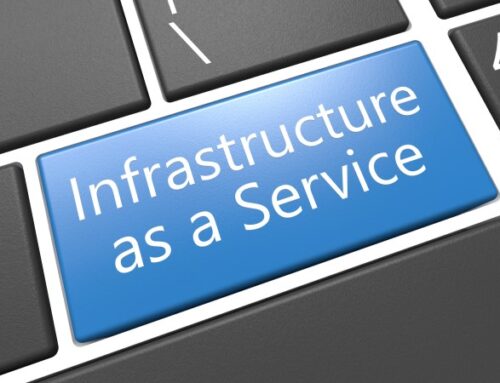People and businesses today use a range of software delivered over the Internet. Both large companies and many small and medium-sized businesses work with applications based on Software as a Service (SaaS). Learn what SaaS means and how cloud services work with Software as a Service.
Definition SaaS: What is Software as a Service?
SaaS is the abbreviation for Software as a Service. In information technology, the term SaaS describes a delivery model for software. The special feature of Software as a Service is that users do not use the software as a separate program. Instead, this software is rented and used via the Internet.
Examples of SaaS include software solutions in companies that operate an online store in e-commerce or ERP systems that are provided by providers via a cloud. The software is accessed online directly via the Internet using a web browser. Software as a Service is a trend in the development of software that is increasingly replacing previous on premise solutions, so that more and more managed services are emerging on the basis of SaaS.
Development of SaaS
The idea of centrally hosting business IT applications led to the emergence of Application Service Providers (ASP) in parallel with the boom of the Internet in the 1990s. These IT services managed multiple software programs from different vendors via a central provider. At that time, end users still had to install the software as clients on their computers. ASP models are considered the forerunners of Software as a Service applications. Fast and mobile Internet in particular led to the development of SaaS as a delivery model for software.
Software as a Service in use
Using a SaaS solution also makes sense for small and medium-sized businesses. The main reason for commissioning cloud-based software is the enormous cost advantage. The best-known SaaS products in the business sector are enterprise resource planning programs (ERP), office applications and customer relationship management (CRM) systems.
Due to the Corona pandemic, video services in particular, such as Microsoft Teams or Zoom, developed into the most frequently used SaaS applications. Applications as software as a service often originated from different providers. This made the integration of the many systems into existing IT infrastructures a trend that led to numerous services for customers in this area.
Software as a Service as a delivery model in cloud computing
Software as a Service is an essential component in cloud computing. SaaS is distinguished from other variants as a delivery model. Here, the Platform as a Service (PaaS) and Infrastructure as a Service (IaaS) delivery models in particular are in the context of SaaS.
Applications based on IaaS form the basis in cloud computing that virtual hardware, storage space or resources for servers can be configured and used via networks. Platform services (PaaS) support programmers in creating IT applications and software. The delivery models can thus be distinguished by the fact that they address different users.
SaaS: End users, consumers
PaaS: developers and programmers
IaaS: network administrators, IT technicians
A key difference between the models is the amount of control users retain when using a particular delivery model. Options range from having complete control (in the case of on premise solutions) to using cloud-based software in the case of SaaS. This is usually purchased and used by companies via subscriptions. The service provider of the SaaS solution provides the software and takes over the service for maintenance and functionality, while the company or individual users merely use the software.
It is different with IaaS applications. Here, companies still manage the operating system and software themselves, while IaaS providers only provide the hardware and IT infrastructure. The PaaS delivery model is similar to the IaaS model, although with PaaS a cloud service is also responsible for the operating system. Users can focus on developing their own software and applications with PaaS.
In addition, software providers also work with managed services such as Database as a Service and Security as a Service. In the service area of Database as a Service (DBaaS), external service providers take on the task of managing and storing data in an external cloud. DBaaS is therefore a variation of PaaS models. In the case of Security as a Service (SECaaS), special services are outsourced from a company to a cloud for the purpose of data security and cybersecurity. These include antivirus programs, for example.
Advantages of SaaS models
There are a number of good reasons why it makes sense to use cloud-based SaaS solutions. IT experts and experienced users point this out time and again. Higher efficiency and thus cost-effectiveness are frequently cited as advantages, as are aspects such as scalability, remote access to services and automatic updates.
Infrastructure and hardware
One strength of SaaS products is the outsourced IT infrastructure. It is no longer necessary for customers to install and run SaaS software on additional computers or in their own data center. This saves resources, for example for the purchase or maintenance of hardware. These costs can be transferred to the company’s own innovations and projects. In addition, there are no expenses for installing and supporting licensed on premise software. Companies that use cloud applications via SaaS benefit from cost savings.
Budget planning
Another advantage of SaaS models is interval payments by the month or year. Costs can be listed and anticipated in the company as a recurring operating expense. Subscriptions for software have now become established because they are billed flexibly based on functions used and number of users.
Scaling
SaaS services, i.e. software from the cloud, offer high vertical scalability. Access to functions and software modules can be controlled as needed. This is important, for example, for companies that require different capacities on a seasonal basis. Companies that are growing rapidly can also automate their need for cloud applications with SaaS.
Remote access
Cloud solutions based on SaaS can be accessed from any location. Users benefit from the permanent availability of SaaS solutions because any Internet-enabled device can access the software. Files and changes to them can be saved immediately and additionally tracked transparently. This model is therefore ideal for field service or remote working.
Automatic further development
In the past, software often had to be reinstalled locally when a new version was available. This is different with Software as a Service, because the respective SaaS provider takes over the automatic updates and provides the customer with a current version of the software. These updates are announced by the providers and usually also documented with a supplementary explanation of the adjustments. IT departments in companies are thus given more freedom for other tasks.
How does a SaaS song model for software work?
The digital transformation is influencing society and business alike. SaaS services usually charge for applications based on certain parameters that result from the use of the software. These are either the number of people using the software or the scope of its functions. Companies pay a monthly or annual fee. The simple subscription models promote entry into previously unknown software because services are predefined. Very often, start-ups from the digital industry rely on SaaS models to offer their software solutions.
Providers of SaaS delivery models provide various services that are used in different areas of a company. The following list shows the main services provided by a SaaS solution:
– Office applications (MS Office 365, Google Workspace).
– File sharing and content collaboration (TeamDrive, Dropbox, Box, Onedrive)
– Customer Relationship Management (CRM) (SAP, Salesforce, Zoho)
– Accounting (Lexware LexOffice, SAP, SAGE)
– Project management (Asana, OpenProject, Microsoft Project)
– Conference applications (Zoom, MS-Teams, GotoMeeting, Google Meet)
– Systems for online-based stores (Shopify, WordPress,
For SaaS solutions to work, certain requirements are necessary for enterprise operations. These include standardized applications so that processes can be largely automated. In addition, providers must also be able to meet specific customer requirements. This is done by making adjustments to the software, some of which are implemented by the customer himself through configuration. SaaS solutions must therefore be scalable above all.
Risks and challenges
In addition to the aforementioned strengths, there are also risks in the context of SaaS solutions that affect both customers and providers of Software as a Service services. Users depend on the software to work anytime, anywhere. Security and maintenance are the responsibility of the software provider, who must meet user expectations.
Security and data protection in SaaS models
By outsourcing their software and IT structures to a cloud, users virtualize their IT resources. When multiple organizations rely on SaaS, the responsibility for data security and data protection also increases for providers and users. In particular, centralized management of all services on one platform can prove critical if security and data protection are neglected.
The level of security of SaaS solutions depends on access rights and their management. In principle, data is secured against unauthorized access via encryption, but there needs to be an organization for access to the SaaS system. Potential threats in the Software as a Service delivery model include phishing, account takeover, malware, audits and compliance, data theft, and unauthorized access. Both the software provider and users share responsibility for secure SaaS systems. Examples of this responsibility include regular security checks, automated backups, and ongoing secure program development.
SaaS providers strive for high availability and ensure that services run smoothly. However, there is always the risk that services are unexpectedly interrupted and customers can no longer use the service. Customers of a Software as a Service platform then lose control over data that can no longer be processed and stored. There is also no protection against hackers that can be influenced by users, because this task is in the hands of the service providers. Therefore, the decision to work with a SaaS model is always a compromise between relief and dependency, which should be carefully assessed.
Software as a Service: TeamDrive offers suitable services
TeamDrive is designed as a SaaS solution and offers appropriate services in many areas to make cloud computing secure and efficient. TeamDrive is a file sharing and content collaboration platform that is characterized by the greatest possible confidentiality, security and ease of use. By combining cloud services with an application that can be installed on any customer device, many processes can be fully automated without any user intervention:
Backup function: TeamDrive enables a copy of all data to be made regularly and automatically. After a system failure or unintentional deletion, the current data status can be quickly restored with a security file.
GDPR: The strict framework conditions of the General Data Protection Regulation with regard to the storage of personal data are guaranteed at all times by features such as the Zero Knowledge principle.
Encryption: High standards for data encryption provide security and data protection. Here, complete end-to-end encryption when saving and sending data is a particular advantage.
Security by design: All requirements for secure data management in the cloud are already taken into account in the programming of hardware and software, so that all TeamDrive services are secure.
Archiving and monitoring retention periods: Files are always backed up in the cloud in an unchangeable form. This means that data relevant to tax accounting, for example, can also be stored in electronic form and archived in an audit-proof manner (according to GoBD).




